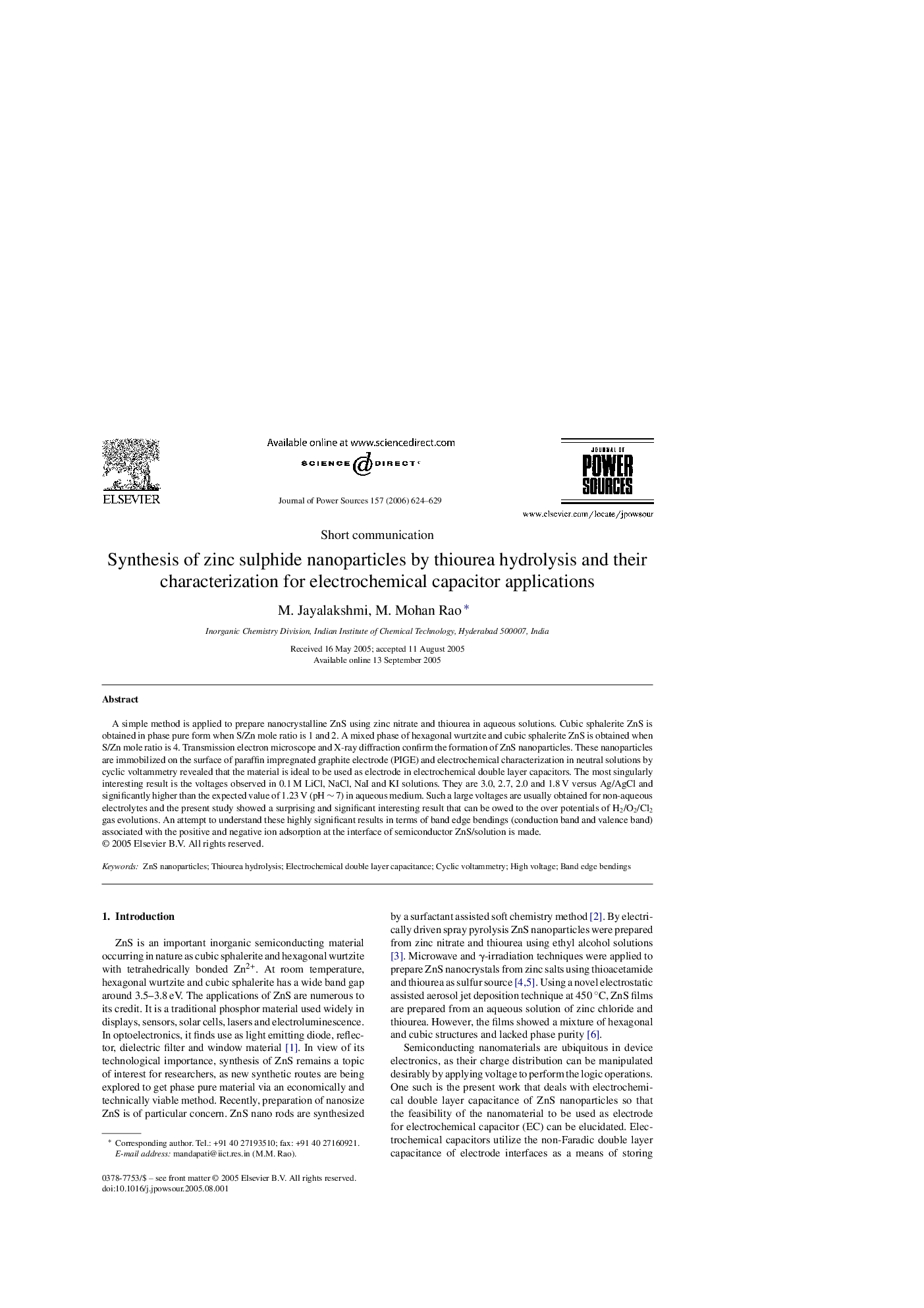| Article ID | Journal | Published Year | Pages | File Type |
|---|---|---|---|---|
| 1292720 | Journal of Power Sources | 2006 | 6 Pages |
A simple method is applied to prepare nanocrystalline ZnS using zinc nitrate and thiourea in aqueous solutions. Cubic sphalerite ZnS is obtained in phase pure form when S/Zn mole ratio is 1 and 2. A mixed phase of hexagonal wurtzite and cubic sphalerite ZnS is obtained when S/Zn mole ratio is 4. Transmission electron microscope and X-ray diffraction confirm the formation of ZnS nanoparticles. These nanoparticles are immobilized on the surface of paraffin impregnated graphite electrode (PIGE) and electrochemical characterization in neutral solutions by cyclic voltammetry revealed that the material is ideal to be used as electrode in electrochemical double layer capacitors. The most singularly interesting result is the voltages observed in 0.1 M LiCl, NaCl, NaI and KI solutions. They are 3.0, 2.7, 2.0 and 1.8 V versus Ag/AgCl and significantly higher than the expected value of 1.23 V (pH ∼ 7) in aqueous medium. Such a large voltages are usually obtained for non-aqueous electrolytes and the present study showed a surprising and significant interesting result that can be owed to the over potentials of H2/O2/Cl2 gas evolutions. An attempt to understand these highly significant results in terms of band edge bendings (conduction band and valence band) associated with the positive and negative ion adsorption at the interface of semiconductor ZnS/solution is made.
